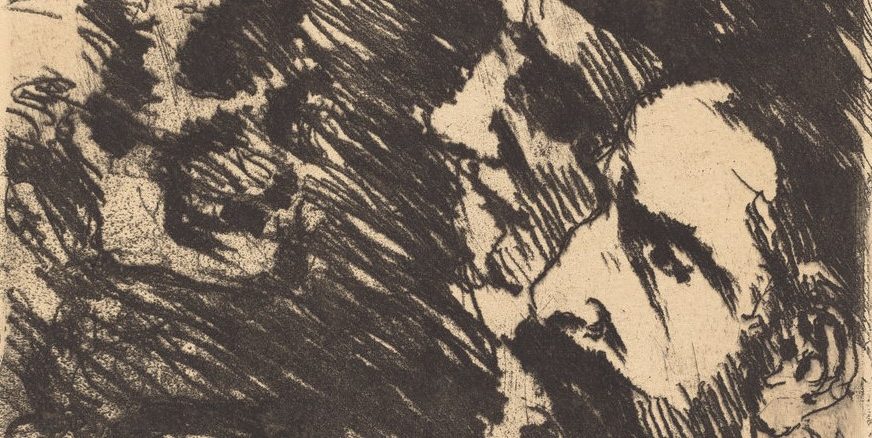
According to the chart, he’s 64. I know they are Catholic and will be disappointed I am the hospital chaplain on call: a liberal, Lutheran, not-yet-ordained trainee. This is my summer of Clinical Pastoral Education at Fairview Riverside Hospital in Minneapolis. I hide behind a black costume with one square inch of hardened white plastic at the neckline that signifies my power. I am armed with a communion kit and service book given to every seminarian. During my day shift I serve the Neonatal Intensive Care Unit. I’ve learned that whenever I enter a room in my clergy garb, I must say, “Your baby is fine,” because I am the harbinger of death and doom, of all the bad things that can happen to humans, the front man for a God that . . .
I’ve been called in from a warm bed and I must be quick: the family wants the man communed before he dies. I’ve practiced this service in pastoral care class but now the grenade is live. My head is an airy cavern. My hands shake as I undo the clasp on the communion kit. I pour wine from a little bottle better suited for perfume into a plastic cup that holds what would be a very disappointing-sized shot. My fingers bobble the impossibly small cap I’m trying to screw back on the bottle and I have to retrieve it from under the man’s bed. I pile wafers on a silver platter. They look like a pile of pizza crusts on a pizza pan at a Barbie doll party.
I cling to the ruse that I know what I’m doing. I find my script in the service book. The words are the wand and now wine turns to blood, wafers to body. I dip the gluten-free body in the Mogan David blood and touch it to the chapped, pale, slightly parted lips of the dying man. I briefly wonder if I should put it in his mouth. Would he choke? Does it matter? I place it on the lid of my communion kit on the bedside table I’ve turned into an altar and finish distributing communion to everyone else in the room, assiduously avoiding eye contact. I’m almost done when a woman holding one of the man’s hands says, “He’s gone.”
They are well-trained to ritual, maintaining respectful if tearful silence so I can put away these cheap, paltry elements of a sacrament. God will not go easily back in the made-in-China box however. There on the lid is the wine-stained wafer that has touched the dying man’s lips. A good Catholic priest would eat it, germs and all.
But I toss it in the trash.
The gasp in the room is so loud I look to see if the man is back from the dead.
 TAYO BASQUIAT is a writer, teacher, adventurer, scavenger, and Wilderness First Responder. I recently gave up tenure as a community college philosophy professor to pursue an MFA in creative writing at the University of Wyoming. My work has appeared/is forthcoming in Superstition Review, On Second Thought, Northern Plains Ethics Journal, the Cheat River Review, Proximity Magazine, and in a growing portfolio as producer of Wyoming Public Media’s “Spoken Words” podcast.
TAYO BASQUIAT is a writer, teacher, adventurer, scavenger, and Wilderness First Responder. I recently gave up tenure as a community college philosophy professor to pursue an MFA in creative writing at the University of Wyoming. My work has appeared/is forthcoming in Superstition Review, On Second Thought, Northern Plains Ethics Journal, the Cheat River Review, Proximity Magazine, and in a growing portfolio as producer of Wyoming Public Media’s “Spoken Words” podcast.
Featured image: Lovis Corinth, “Death Visits the Strucks,” softground etching in black on Japan paper, 1921, National Gallery of Art.


